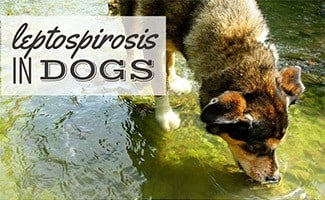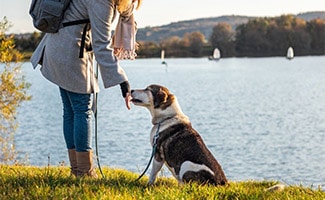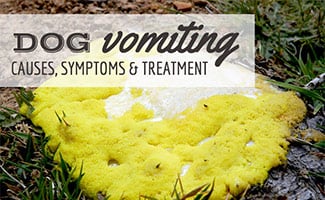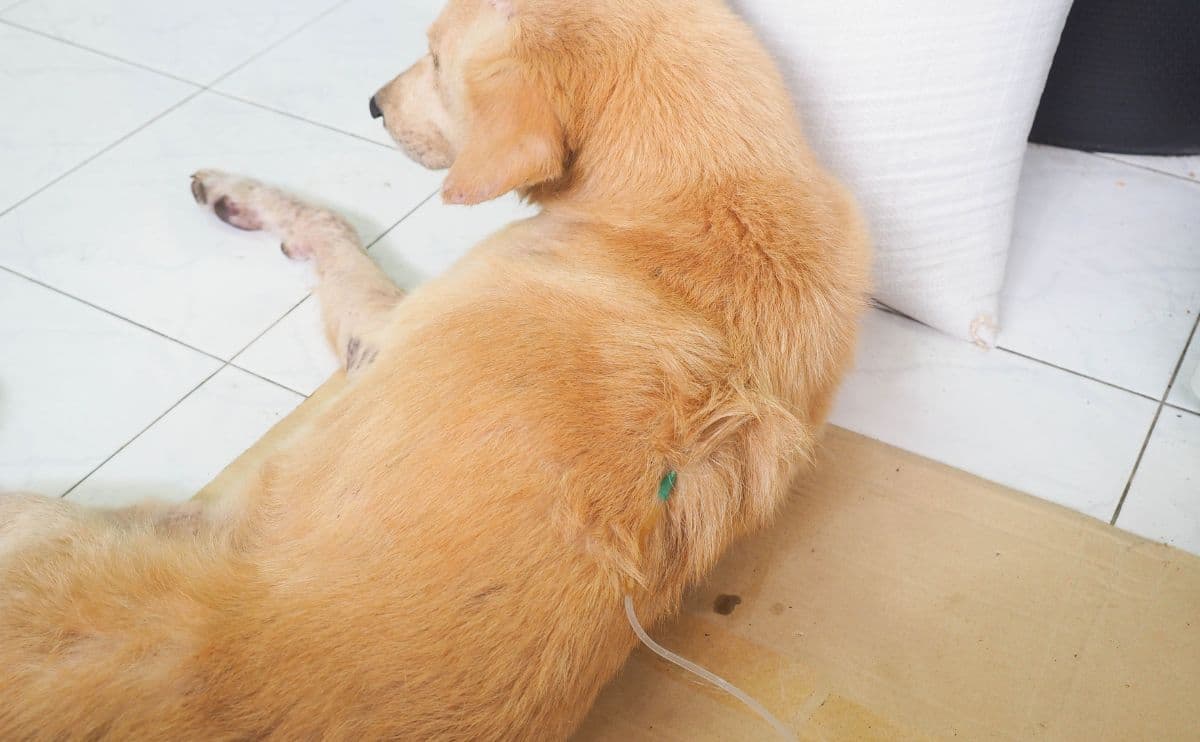When you purchase through links on our site, we may earn a commission. Here’s how it works.

If you were a pup parent several years ago, you might recall canine leptospirosis hitting the news locally, regionally, or even nationally. Dogs contracted this disease from simply swimming in local streams and rivers and becoming seriously ill and even dying. It became a popular news topic for a fleeting moment.
While the news hasn’t focused on this disease as much lately, it can still be a very real threat to your dog, depending on where your dog roams. What do you need to do to prevent your dog from getting sick? And if he does, what are the symptoms of canine leptospirosis? We give you all the information you need to know about this disease that can become severe quickly.
What Is Leptospirosis In Dogs?
Leptospirosis, often referred to as “lepto,” is an infectious disease caused by a bacteria called Leptospira. The disease can cause serious damage to a dog’s kidney and liver, and, in severe cases, it may be fatal.
These bacteria are spread in the urine of infected animals and can survive in soil or water for weeks to months. While leptospirosis can occur anywhere, the bacterial infection is more common in areas with warm climates and high rainfall.
How Do Dogs Get Infected?
Dogs can get infected in several ways:
- By direct contact with the urine of infected animals (other dogs, domestic livestock, or wild animals, such as rats, opossums, raccoons, skunks, and deer)
- By drinking or swimming in urine-contaminated water, such as rivers, streams, lakes, and even puddles
- Through a bite from an infected animal
- By eating carcasses infected with leptospira bacteria
- Through the placenta from the mother dog to the puppies
Symptoms
It takes anywhere from 4-12 days after exposure for a dog to start showing symptoms, but the signs of lepto in dogs vary. Some infected dogs don’t develop any symptoms, some have mild signs and recover quickly on their own, and others develop severe illness and death. Signs of serious leptospirosis bacterial infection may include:
Lethargy
- Loss of appetite
- Increased thirst and urination
- Vomiting
- Diarrhea
- Fever
- Shivering
- Jaundice (the lining of the mouth and the whites of the eyes turn yellow)
- Painful inflammation within the eyes
If your dog is showing signs of leptospirosis, it’s crucial to seek veterinarian care as soon as possible. The illness usually develops rapidly, even within a few days, and can become fatal fast.
Once the leptospira bacteria enter the body, they multiply in the bloodstream and then move into the tissues. They often migrate to the kidney and liver and can cause extensive damage and even organ failure in severe cases. Occasionally, dogs can develop serious lung disease and have trouble breathing. Respiratory failure due to pulmonary hemorrhage is a very severe reaction, but it can occur.
Leptospirosis can also cause excess fluid accumulation in the chest, abdomen, and legs, as well as bleeding disorders (bloody urine, stool, vomit, or saliva; nosebleeds; and pinpoint red spots, or petechiae, found on the gums or other mucous membranes).
Diagnosis And Treatment
Your veterinarian can easily diagnose lepto through blood and urine tests. Blood tests also help your vet see if there are any kidney or liver problems caused by the infection. The Microscopic Agglutination Test (MAT) is a widely used test that is used to diagnose canine leptospirosis.
Veterinarians usually treat leptospirosis with antibiotics, and most dogs will recover without major problems. Antibiotics help treat the active infection and can also prevent dogs from becoming carriers of the bacteria.
Dogs with signs of kidney or liver damage or other complications may need to be hospitalized and given intravenous fluids and other treatment.
Prevention
There are two major ways you can help prevent your dog from contracting leptospirosis.
Vaccination
Talk to your veterinarian about the leptospirosis vaccine that’s available for puppies and adult dogs, as well as your dog’s risk of contracting the disease. The American Animal Hospital Association (AAHA) considers this a “non-core” vaccine for dogs, which means they don’t recommend it unless your dog has a good chance of being exposed.
The reason for this is that the vaccine’s efficacy is limited and doesn’t always prevent infection (although it can make the disease much milder). There also have been some reports of adverse reactions that vary from minor to severe.
Moderating Your Dog’s Environment

Because the vaccine isn’t foolproof, your best way to prevent infection is by keeping your dog away from contaminated water and soil. Yes, this means you may have to rein your dog in from accessing streams, rivers, and lakes.
And if you live in a rural location, you should be careful about where your dog roams. Domestic livestock and wild animals can be major carriers of the disease, so any contaminated water or soil your dog comes across could cause infection.
Also, try to keep your yard free from items like food, pet food bowls, and garbage that would attract wildlife, like rats, raccoons, and other carriers of the disease.
Can Humans Get Infected?
Leptospirosis is a zoonotic disease, meaning it can spread from animals to humans. So, experts recommend that you use face masks, wear gloves, and wash your hands regularly when caring for your pup to avoid getting any infected urine in your mouth, nose, or eyes or through broken skin.
It’s also wise to throw away your dog’s bedding and disinfect any areas of your home that may have become contaminated with your dog’s urine.
Leptospirosis in humans can cause many symptoms, such as fever, headache, abdominal pain, vomiting, diarrhea, jaundice, and a rash. It can also cause kidney or liver disease in humans. While most human cases of lepto in the U.S. result from swimming in urine-tainted bodies of water, it’s still possible to get infected from your pup.
See One Dog Owner’s Experience (Video)
One dog owner shared her scary experience when her dog became infected with leptospirosis a few years ago in a local outbreak in Tucson, AZ. See her story in the following video.
What Other Vaccinations Does Your Dog Need?
Whether or not your dog is a good candidate for the lepto vaccine, there are several others that your dog should get regularly. See our article on which vaccinations are necessary to learn more about which ones are core and non-core, what they protect against, when they should get them, and more.
Tagged With: Infectious Disease, Vaccinations


